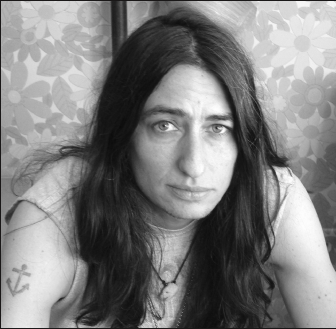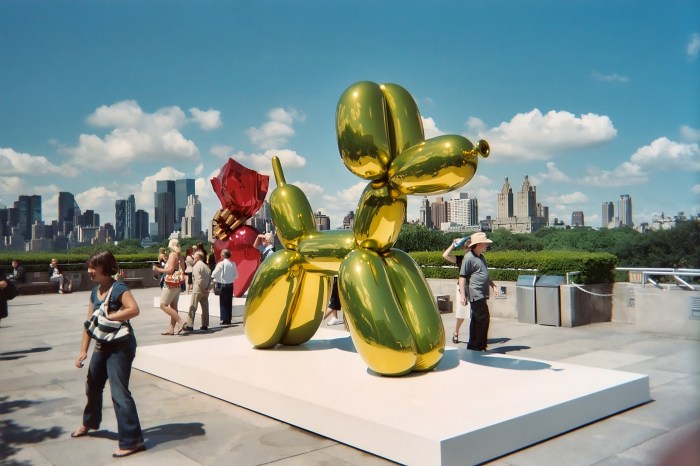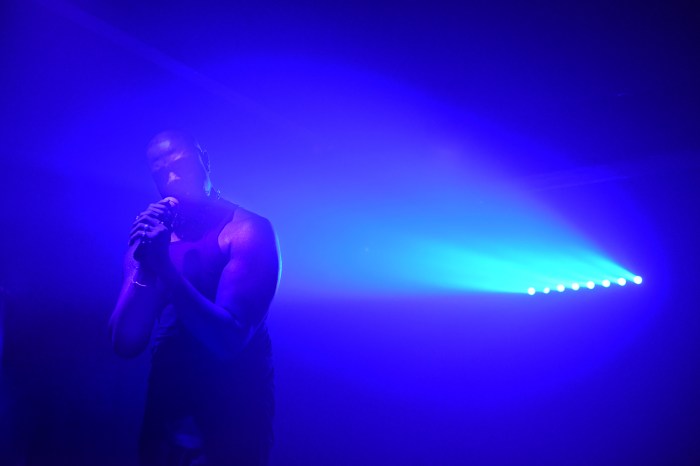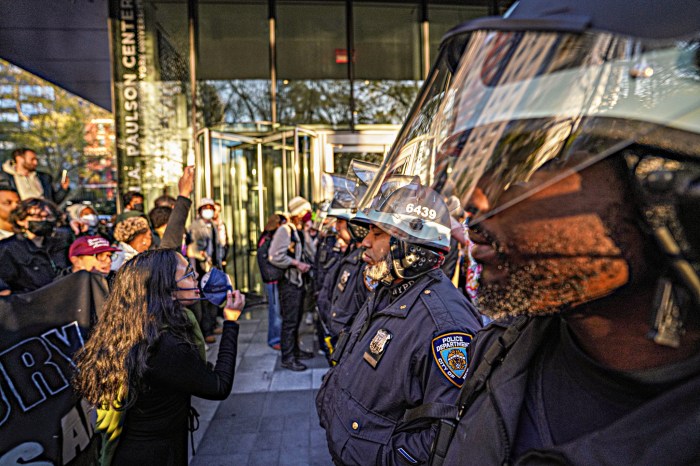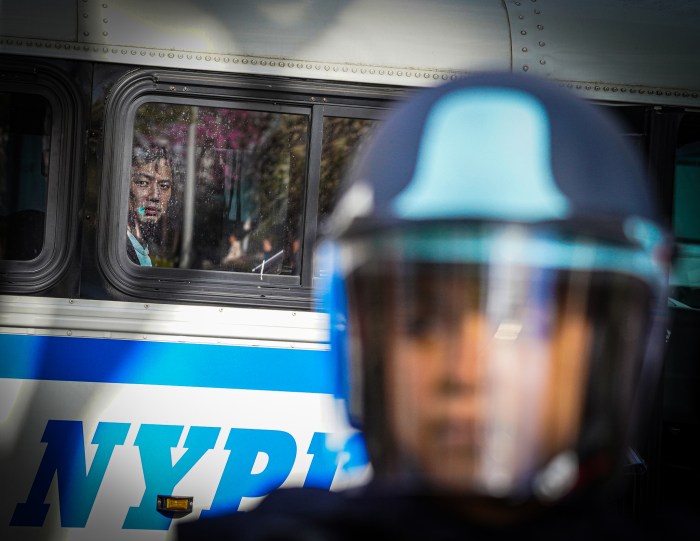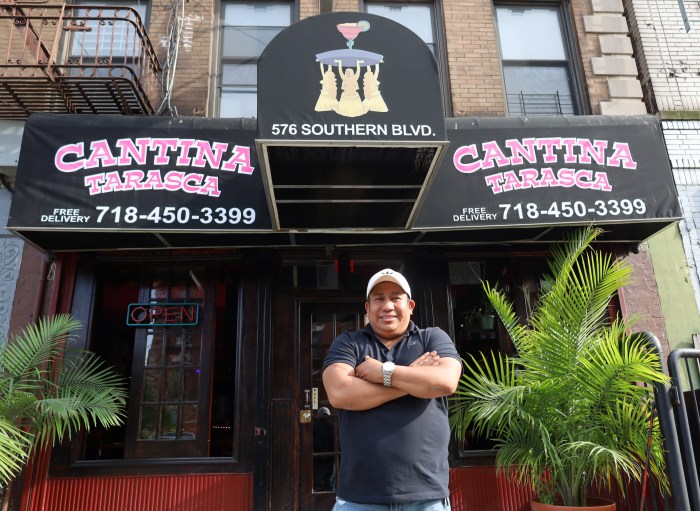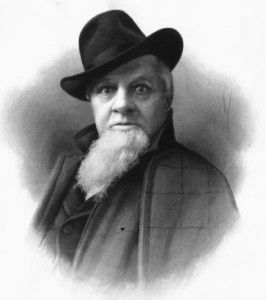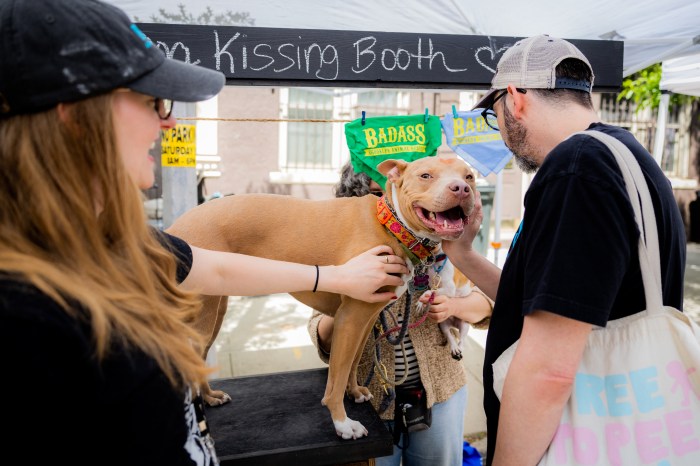By Clare Trapasso
Artist Barbara Monoian wasn’t intending to start the Musée de Monoian when she began displaying her hog intestine and deer skin sculptures three years ago in her East Village home. But within months, the walls and ceilings of her 240-square-foot apartment were plastered with about 300 visual and multimedia pieces from 90 mostly Lower East Side and East Village artists. No space was spared, including Monoian’s bathroom, which was turned into a shrine of glitter bark sculptures and giant, handcrafted, wooden instruments.
But in June, Monoian, tired of exploding rents and neighborhood gentrification, moved to Pittsburgh to start an artists’ residence — and took the Musée with her.
Two months and one trip to Alaska later, she’s had a change of heart.
“I feel the transition out of New York was inevitable,” said Monoian, 38, whose quiet intensity seems to defy her slight, muscular frame and the grey strands streaking her long, dark hair. “I’m moving to Pittsburgh for the space. Real estate is affordable.”
“[But] I’d like the Musée to be in New York one more time, because this is where it was born,” continued Monoian, who hopes to display the museum for a year in the city and then return it to Pittsburgh. “I don’t see myself coming back to New York permanently, though I will always keep a foot in the door.”
Monoian moved to the Lower East Side 19 years ago from Washington State. Twice, she woke up to dead bodies on her stoop. Through demonstrations with AIDS activist group ACT-UP, she met local artists and was arrested in several protests.
But it wasn’t until after 9/11 that Monoian began identifying as an artist. Depressed, she took a trip to Alaska, home of her grandparents and her commercial fishing boat, which she had used years ago to help pay her way through college. There, she was inspired by a series of dead deer she saw hanging up after a hunt.
Monoian started crafting sculptures from animal skin. Her most popular piece, made of deer skin, resembles an enormous pair of testicles.
Shortly afterwards, Monoian began displaying her creations in her $780 a month rent-stabilized apartment, which she shared for a time with her twin sister, Elizabeth, also an artist. Realizing that many of her friends and fellow artists were struggling to find venues to show their work, Monoian opened her home to the community.
Through word of mouth and the help of artist Mor Erlich, news of the Musée spread. Before they knew it, Monoian, with the help of Elizabeth, had turned the tiny apartment into a museum.
“It was like a walk-in sculpture,” said Tine Kindermann, Chair of Artists Alliance Inc., who displayed several handcrafted dioramas in the Musée. “The Musée was a very unique and powerful place. It was an incredible meeting place for art, artists and the community.”
Unlike traditional galleries, no piece of artwork was rejected from the museum, which got its nickname from a Village Voice article about Monian’s apartment. The work of well-known artists like Eddie Boros, now deceased, was displayed alongside pieces from unknowns.
“There are so many artists who are not showing their artwork because it’s expensive to show in New York City and very exclusive,” said Monoian. “The Musée is a museum of inclusion.”
But the neighborhood was changing. As crime fell, rents skyrocketed. Many artists found it difficult to afford their rents and left the neighborhood. Others, like Monoian, lived hand-to-mouth.
She and Erlich dreamed of opening a place for artists to live and work in a community, but couldn’t afford space in Manhattan. So when Elizabeth bought a 2,500 square-foot Victorian row house in Lawrenceville, Pittsburgh, and decided to turn it into an artists’ residence, Monoian and Erlich decided it was time to leave, and give up the L.E.S. apartment cum gallery.
“I think [the Musée] was a stunning space and an example of an artist in the community, who promoted not only her own work, but the work of the people around her,” said Paul Clay, Gallery Director of Cuchifritos Gallery Space in the Lower East Side Essex Market.
According to Clay, the loss of the Musée has repercussions for local artists as they find it increasingly difficult to secure venues willing to show their work.
“Right now there are more galleries than there have been for awhile, but artists have to be further along in their careers before they’re likely to be shown,” said Clay. “It’s harder for artists to get breaks into the system. In some ways, Monoian was helping artists get breaks.”
While Monoian and Erlich spent July vacationing in Hoonah, Alaska, getting Monoian’s boat ready to house artists for the month, Tricia Klihamer, another New York artist opened the Musée for them in Pittsburgh.
Now Monoian is back in the East Village staying with friends, and the Musée is packed up in boxes in Pittsburgh.
In September, she and Erlich plan to turn Erlich’s former Lower East Side apartment into a home base as they travel between New York, Pittsburgh and Alaska. Monoian is searching for a temporary space for the museum, but has no leads yet.
“My mind is not changed [about leaving],” said Monoian. “[But] we want to reconnect with artists and have a celebration one more time, Musée de Monoian style in New York.”
To find out when the Musée de Monoian will reopen, email Museedemonoian@gmail.com or visit www.myspace.com/Museedemonoian.



